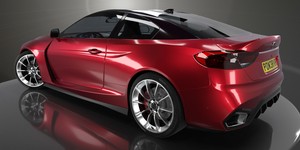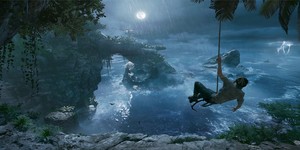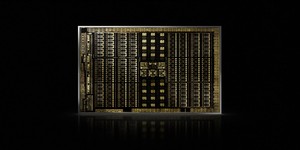Imagination demos PowerVR real-time raytracing tech
January 7, 2016 | 15:01
Companies: #caustic #imagination-technologies #unity

Imagination Technologies has announced a breakthrough for real-time raytracing, showing off how its latest PowerVR Wizard graphics architecture can scale between mobile and desktop power envelopes without sacrificing performance or functionality.
Traditionally, raytracing - a form of 3D rendering where the rays of light in an image are followed along their path and as they interact with and reflect from materials, creating an extremely realistic image - has demanded too much power to be used as a real-time renderer. Each raytraced image can take multiple hours to render, and while Imagination's Caustic raytracing units (RTUs) offer acceleration to real-time performance their bulky design and high power draw limit them to server and workstation use.
PowerVR Wizard, first introduced by the company at GDC 2014, promised to change that - and now the company is delivering on that promise. At the Consumer Electronics Show this week, Imagination is demonstration real-time raytracing on an unmodified PowerVR GR6500 graphics processor, designed with mobile use in mind - although the GPU's development board runs inside a desktop system on a PCI Express add-in card. Despite being built with battery-powered devices in mind, the company has claimed that the GR6500 is capable of real-time and interactive path tracing - a superset of which raytracing is the most well-known part.
'Path tracing, as the name suggests, employs the laws of physics to calculate exactly how much light reaches a pixel of the image with a virtual camera. This makes it ideal for rendering images with uncompromising photorealism and also shortens the content creation process drastically by allowing the artist to work in familiar materials, e.g. wood, stone and glass, and by placing lights instead of using the huge bag of tricks needed to do high performance rendering,' explained Imagination's Alexandru Voica in a blog post announcing the demo. 'Previously, path tracing was confined by its slow speed to offline workflows like architectural visualisations and cinematic special effects. Empowered by the PowerVR GR6500, path tracing can now run at interactive speeds and with unprecedented power efficiency. Path tracing is poised become an important part in emerging uses of graphics including VR and AR as they mature.'
The technology in the GR6500 isn't limited to mobile use, however. Imagination has demonstrated that it's possible link multiple PowerVR GR6500 GPUs together in a single system for boosted performance, all the way through to desktop- and workstation-class, while promising that as the company develops the hardware and shifts to smaller process nodes than its current 28nm the Wizard architecture will scale accordingly.
The company's CES booth demonstration, reproduced below, is based on the popular Unity game engine running in an hybrid raytracing and rasterised rendering mode, with Imagination claiming that the GR6500 is able to run both passes concurrently in hardware to avoid any performance penalties.
Traditionally, raytracing - a form of 3D rendering where the rays of light in an image are followed along their path and as they interact with and reflect from materials, creating an extremely realistic image - has demanded too much power to be used as a real-time renderer. Each raytraced image can take multiple hours to render, and while Imagination's Caustic raytracing units (RTUs) offer acceleration to real-time performance their bulky design and high power draw limit them to server and workstation use.
PowerVR Wizard, first introduced by the company at GDC 2014, promised to change that - and now the company is delivering on that promise. At the Consumer Electronics Show this week, Imagination is demonstration real-time raytracing on an unmodified PowerVR GR6500 graphics processor, designed with mobile use in mind - although the GPU's development board runs inside a desktop system on a PCI Express add-in card. Despite being built with battery-powered devices in mind, the company has claimed that the GR6500 is capable of real-time and interactive path tracing - a superset of which raytracing is the most well-known part.
'Path tracing, as the name suggests, employs the laws of physics to calculate exactly how much light reaches a pixel of the image with a virtual camera. This makes it ideal for rendering images with uncompromising photorealism and also shortens the content creation process drastically by allowing the artist to work in familiar materials, e.g. wood, stone and glass, and by placing lights instead of using the huge bag of tricks needed to do high performance rendering,' explained Imagination's Alexandru Voica in a blog post announcing the demo. 'Previously, path tracing was confined by its slow speed to offline workflows like architectural visualisations and cinematic special effects. Empowered by the PowerVR GR6500, path tracing can now run at interactive speeds and with unprecedented power efficiency. Path tracing is poised become an important part in emerging uses of graphics including VR and AR as they mature.'
The technology in the GR6500 isn't limited to mobile use, however. Imagination has demonstrated that it's possible link multiple PowerVR GR6500 GPUs together in a single system for boosted performance, all the way through to desktop- and workstation-class, while promising that as the company develops the hardware and shifts to smaller process nodes than its current 28nm the Wizard architecture will scale accordingly.
The company's CES booth demonstration, reproduced below, is based on the popular Unity game engine running in an hybrid raytracing and rasterised rendering mode, with Imagination claiming that the GR6500 is able to run both passes concurrently in hardware to avoid any performance penalties.

MSI MPG Velox 100R Chassis Review
October 14 2021 | 15:04








Want to comment? Please log in.